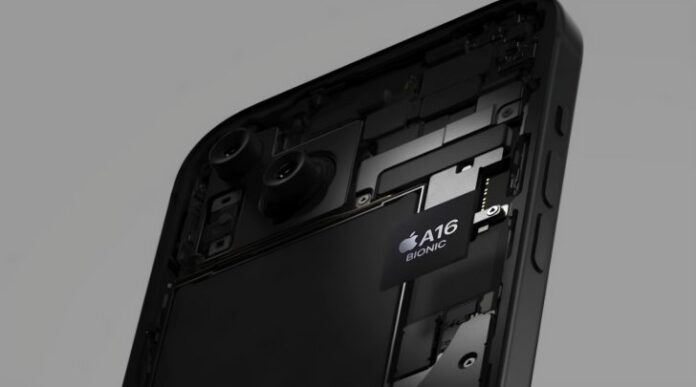
The A17 Pro is reserved for just the iPhone 15 Pro and iPhone 15 Pro Max, but that does not make the A16 Bionic found in the iPhone 15 Plus and iPhone 15 any less capable. In fact, the same SoC performs slower when running in the iPhone 14 Pro, according to the latest benchmark comparison on GFXBench.
No difference in the number of cores on the A16 Bionic on the iPhone 15 Plus and iPhone 14 Pro, as both phones feature a 5-core GPU
Before discussing the benchmark comparison, we should point out that the iPhone 15 Plus and iPhone 14 Pro use the same A16 Bionic with a 6-core CPU and 5-core GPU. Both models also feature the same 6GB RAM, so even in the memory category, there is no difference between the two handsets that will display varying results.
Only a limited number of benchmarks were run on GFXBench, with an impressive 19.1 percent difference shown in the ‘Aztec Ruins High Tier’ test. The iPhone 15 Plus obtains 47.9FPS in the same benchmark, with the iPhone 14 Pro getting 40.7FPS. Our first assumption was that the iPhone 15 Plus features a better cooling solution than the iPhone 14 Pro, allowing the A16 Bionic to maintain better temperatures and achieve a better result.

However, the following results made us rethink our assumption about the iPhone 15 Plus’ cooling solution. In the ‘1440p Manhattan 3.1.1 Offscreen’ test, there was only a 3.2FPS difference between the two models. If that was not puzzling enough, the iPhone 15 Plus actually ended up being slower than the iPhone 14 Pro in the Manhattan 3.1 test, getting 151.9FPS compared to 156.9FPS on last year’s model.
It is unclear why the A16 Bionic on the iPhone 15 Plus is performing fairly well in one test while running slower in others. It is possible that GFXBench needs an update before being run on the newer versions again. Hopefully, the results will be different in the second benchmarking test.
WccftechContinue reading/original-link]




